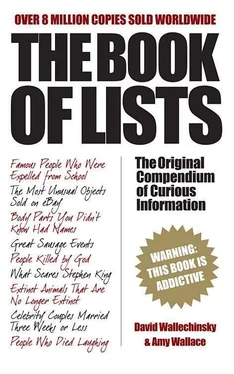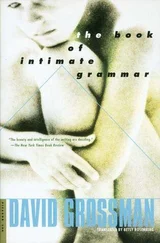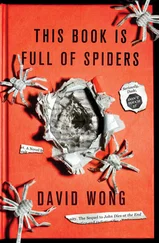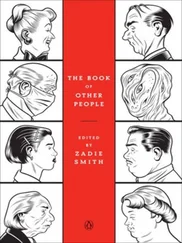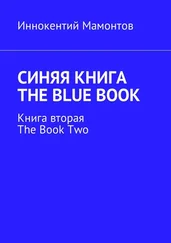PETER DE RIGA — A LIPOGRAM BIBLE
Summarising the entire Bible in Latin, the sixteenth-century canon of Rheims Cathedral in France omitted a different letter of the alphabet from each of the 23 chapters he produced.
TRYPHIODORUS — A LIPOGRAM ODYSSEY
The Greek poet Tryphiodorus wrote his epic poem Odyssey , chronicling the adventures of Ulysses, excluding a different letter of the alphabet from each of the 24 books. Thus, the first book was written without alpha, the second book contained no betas, and so on.
LOPE DE VEGA CARPIO — 5 NOVELS WITHOUT VOWELS
Also known as Spain’s first great dramatist, who reputedly wrote 2,200 plays, this sixteenth-century author wrote five novels that were lipograms. Each book omitted one of the five vowels a, e, i, o and u in turn.
ERNEST VINCENT WRIGHT — NOVEL WITHOUT AN E
Tying down the e key on his typewriter to make sure one didn’t slip in, Wright, a graduate of MIT, wrote a credible 50,110–word novel, Gadsby (1939), totally excluding the most frequently used letter of the English alphabet. ‘Try to write a single ten-word sentence without an e,’ said the Los Angeles Times , ‘and you will get some idea of the task he set himself.’ Wright’s novel concerned the effort of a middle-age man named John Gadsby to make his home town of Branston Hills more progressive and prosperous by turning over its administration to an Organization of Youth. Wright, a 67–year-old Californian, undertook his e-less novel to prove such a feat could be done. He wrote the book in 165 days. He employed no tricks, such as coining words or substituting apostrophes for e ’s. His greatest difficulty, he stated, was in avoiding the use of verbs ending with ed, being forced to use ‘said’ for ‘replied’ or ‘asked’, and in avoiding all pronouns such as ‘he’, ‘she’ or ‘they’. Wright died on the day of his book’s publication — but the $3.00 novel remains his monument. Today it sells at rare-book dealers for more than $1,000 a copy, with a jacket.
GEORGES PEREC — E-LESS AND E-FULL NOVELS
Perec (1936–82) was a member of the literary group Oulipo (a French acronym for ‘workshop of potential literature’), the members of which experimented with constrained writing. Perec’s most notable work in this regard is his novel La Disparation (1969), written without the letter e . It was translated into English, also without e ’s, by Gilbert Adair under the title A Void . Another Perec novel, Les Revenentes (1972), is a sort of opposite: the letter e is the only vowel used.
CHRISTIAN BOK — VOWEL-LESS POETRY
Bok, an experimental Canadian poet, wrote Eunoia , a work in which each chapter is missing four of the five vowels. The fourth chapter, for example, does not contain a, e, i or u . A sample of the writing from this chapter is: ‘Profs from Oxford show frosh who do post-docs how to gloss works of Wordsworth.’ Eunoia won the Griffin Poetry Prize in 2002 and became one of the best-selling works of Canadian poetry.
MARK DUNN — AN INCREASINGLY LIPOGRAMMATIC BOOK
Dunn’s Ella Minnow Pea (2001) is subtitled ‘A Progressively Lipogrammatic Epistolary Fable’. The story concerns a small country that begins to outlaw the use of various letters. As each letter is banned within the story, it is no longer used in the text of the novel.
– L.K.S. & C.F.
MARGARET ATWOOD’S 10 ANNOYING THINGS TO SAY TO WRITERS
a) What to say
b) What writer hears
1. a) I always wait for your books to come in at the library.
b) I wouldn’t pay money for that trash.
2. a) I had to take you in school.
b) Against my will. Or: And I certainly haven’t read any of it since! Or: So why aren’t you dead?
3. a) You don’t look at all like your pictures!
b) Much worse.
4. a) You’re so prolific!
b) You write too much, and are repetitive and sloppy.
5. a) I’m going to write a book too, when I can find the time.
b) What you do is trivial, and can be done by any idiot.
6. a) I only read the classics.
b) And you aren’t one of them.
7. a) Why don’t you write about ______?
b) Unlike the boring stuff you do write about.
8. a) That book by ______ (add name of other writer) is selling like hotcakes!
b) Unlike yours.
9. a) So, do you teach?
b) Because writing isn’t real work, and you can’t possibly be supporting yourself at it.
10. a) The story of MY life — now THAT would make a good novel!
b) Unlike yours.
ROALD DAHL’S 5 BOOKS TO TAKE TO A NEW PLANET
Born in Llandaff, Wales, in 1916, Roald Dahl served as a Royal Air Force fighter pilot during World War II before becoming a hugely successful writer of novels ( My Uncle Oswald ), short-story collections ( Someone Like You and Kiss, Kiss ), screenplays (the James Bond film You Only Live Twice ) and highly influential juvenile works ( Charlie and the Chocolate Factory and James and the Giant Peach , which both became highly successful films). Although Dahl was much beloved for his children’s books (his preferred form, he said, because ‘adults are much too serious for me’), a dysfunctional marriage to Academy Award-winning actress Patricia Neal, as well as accusations of anti-Semitism, have made him a controversial figure since his death in 1990. Dahl contributed this list to The Book of Lists in 1983.
• Price’s Textbook of the Practice of Medicine (Oxford University Press). Reason: A professional medical textbook covering the description, diagnoses and treatment of virtually every known disease or illness.
• The Greater Oxford Dictionary
• The Pickwick Papers — Charles Dickens
• A book containing all of Beethoven’s piano sonatas
• Johann Sebastian Bach’s B minor Mass
HENRY MILLER’S 10 GREATEST WRITERS OF ALL TIME
One of the most controversial and innovative American writers of the twentieth century, Henry Miller was born in New York City on December 26, 1891. He spent much of the 1930s as an expatriate in Paris, where he met Anaïs Nin and wrote his two most famous novels, Tropic of Cancer (1934) and Tropic of Capricorn (1939). The books were banned for many years in English-speaking countries before being published in the UK in 1963 and the US in 1964, after a landmark obscenity trial. His other works included Black Spring, Colossus of Maroussi and The Rosy Crucifixion trilogy of Sexus, Plexus and Nexus . Henry Miller died in Pacific Palisades, California, on June 7, 1980. He contributed the following list to The Book of Lists in 1977.
• Lao-Tzu
• François Rabelais
• Friedrich Nietzsche
• Rabindranath Tagore
• Walt Whitman
• Marcel Proust
• Ělie Faure
• Marie Corelli
• Fyodor Dostoevsky
• Isaac Bashevis Singer
Élie Faure (1873–1937) was a French art historian who published a five-volume History of Art between 1909 and 1921. He had studied medicine and brought a scientific approach to his examinations of art history. London-born Marie Corelli (1855–1924), whose real name was Mary Mackay, wrote 28 books, most of them lurid romances, many dealing with psychic or religious events, and all enormously popular. Critics held her in disdain (once, in retaliation, she refused to send them review copies), but Queen Victoria adored her work. Among Corelli’s most widely read books are The Sorrows of Satan and The Murder of Delicia .
Читать дальше
